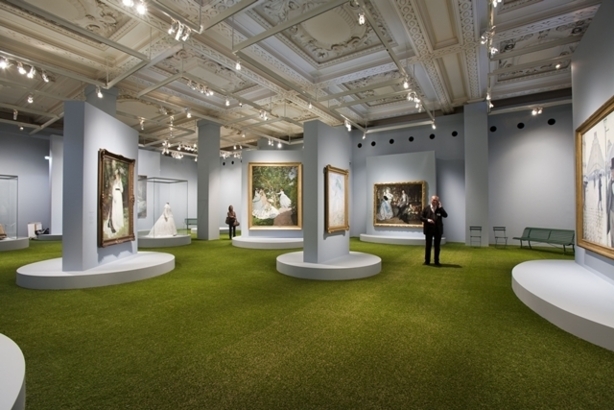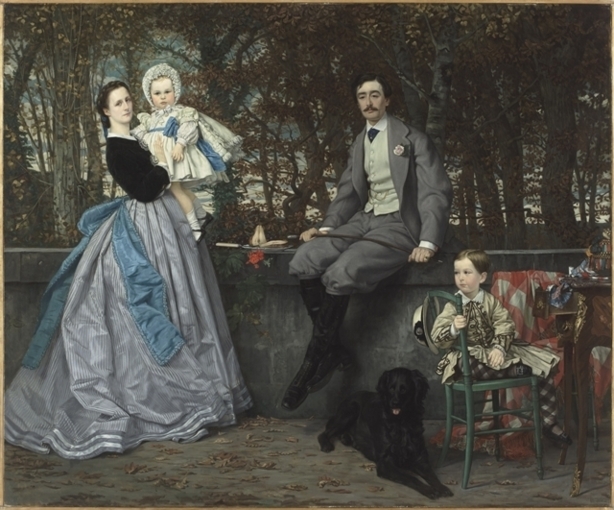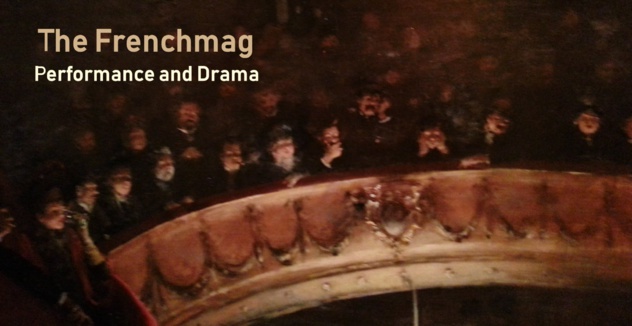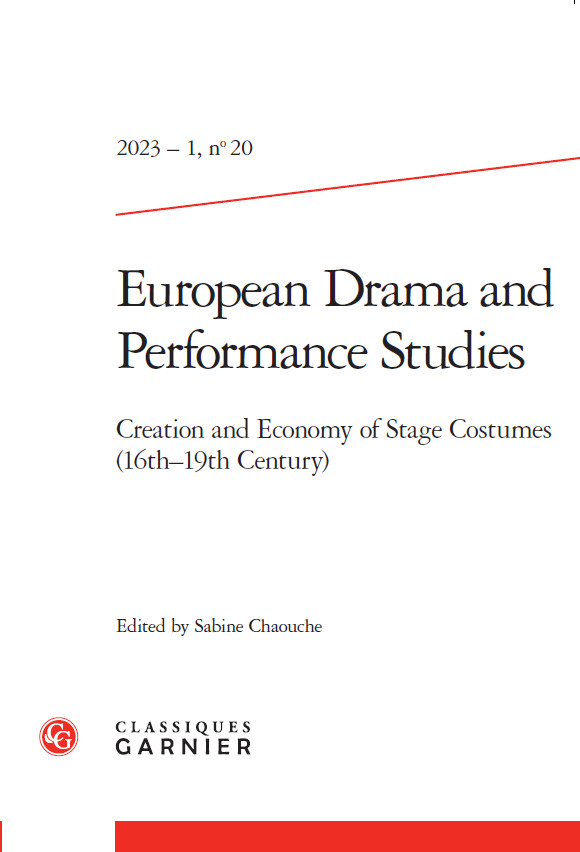Presentation by the Museum
![Édouard Manet (1832-1883) Jeune dame en 1866, dite aussi la femme au perroquet [Young Lady in 1866, also called Woman with a Parrot] 1866, oil on canvas, 185.1 x 128.6 cm New York, The Metropolitan Museum of Art, © The Metropolitan Museum of Art, Dist. RMN / image of the MMA Édouard Manet (1832-1883) Jeune dame en 1866, dite aussi la femme au perroquet [Young Lady in 1866, also called Woman with a Parrot] 1866, oil on canvas, 185.1 x 128.6 cm New York, The Metropolitan Museum of Art, © The Metropolitan Museum of Art, Dist. RMN / image of the MMA](https://www.thefrenchmag.com/photo/art/default/4953554-7394818.jpg?v=1353623714)
Édouard Manet (1832-1883) Jeune dame en 1866, dite aussi la femme au perroquet [Young Lady in 1866, also called Woman with a Parrot] 1866, oil on canvas, 185.1 x 128.6 cm New York, The Metropolitan Museum of Art, © The Metropolitan Museum of Art, Dist. RMN / image of the MMA
Although the Impressionists continued to capture on canvas the constantly changing natural world, their revolutionary contribution was not limited to painting landscapes. Their sharp observation also made them sensitive to urban change and the behaviour of city dwellers. In their desire to depict contemporary life, the Impressionists often chose to represent the human figure in an everyday setting, to capture the “modern man going about his business or in moments of leisure.
Manet and Degas were perfect examples of this new Parisian, the “flâneur”, the sophisticated, nonchalant observer of “modern life” and its daily cast of characters. Although they were not interested in scrupulous representation of physiognomy, costume and dress, the Impressionists nevertheless recorded the fashions and attitudes of their time through their desire to present the portrait as a snapshot of the subject in familiar surroundings, through their ability to revitalise both the typology and topography of the genre scene, and above all by focusing on “the daily metamorphosis of exterior things" to quote Baudelaire.
In Impressionist painting, figures and clothing lose, to take Mallarmé’s observation about Manet, “a little of their substance and their solidity”, or, in the words of the Goncourt brothers, they “are transfigured by the magic of light and shade”. The figure, whether moving or at rest, became more integrated into the surrounding atmosphere. The descriptive reality of the man and woman in the 1860-1880s and of their daily appearance underwent an undeniable metamorphosis because of these aesthetic approaches. On the other hand, thanks to the swiftness of execution, the gestures and play of fabric against the body became more authentic. Thus, we learn much more about the look during this period than we would from the posed society portrait or the artificially natural genre scene.
This observation is based on some sixty masterpieces by Manet, Monet, Renoir, Degas and Caillebotte. Some of them have not been shown in Paris for many years, for example Renoir’s portrait of Madame Charpentier et ses enfants [Madame Charpentier and her Children] (New York, The Metropolitan Museum of Art), Manet’s Nana (Hamburg, Hamburger Kunsthalle) exhibited at the Manet retrospective in 1983 (Galeries Nationales du Grand Palais), and The Theatre Box by Renoir from the Courtauld Institute in London.
For a better understanding of the Impressionists’ approach, their works will be displayed alongside those of their contemporaries - Tissot and Stevens for example – who concentrated even more on portraying Parisian women and the elegant society of the Second Empire and the early days of the Third Republic. But comparing these images with the real thing is much more instructive. And for this, a display of around fifty dresses and accessories, including ten hats, presents an overview of women’s fashion at the time of the Impressionists, a fashion that was mainly characterised by the gradual abandonment of the crinoline in favour of the bustle. Men’s fashion, less varied and more uniform, is evoked through some twenty pieces. All these examples of textiles come from public or private collections in France. And finally, an important documentary display brings together designs, fashion plates, fashion magazines, including La dernière Mode, a short-lived review edited by Mallarmé, and photographs from the Disdéri studio.
General curators: Gloria Groom, curator, Art Institute, Chicago
Guy Cogeval, director, Musée d'Orsay and Musée de l'Orangerie, Paris
Philippe Thiébaut, general curator, Musée d'Orsay, Paris
Susan Stein, curator, Metropolitan Museum of Art, New York
Scenography: Robert Carsen, scenographer and artistic director
Nathalie Crinière, Agence NC, architect-exhibition designer
Other venues: 26 February - 27 May 2013, New York, Metropolitan Museum of Art
26 June - 22 September 2013, Chicago, The Art Institute
This exhibition was produced with the support of LVMH / Moët Hennessy. Louis Vuitton and Christian Dior
Media partners: Arte, France Inter, LCI, Le Parisien, Le Point, Stylia
Manet and Degas were perfect examples of this new Parisian, the “flâneur”, the sophisticated, nonchalant observer of “modern life” and its daily cast of characters. Although they were not interested in scrupulous representation of physiognomy, costume and dress, the Impressionists nevertheless recorded the fashions and attitudes of their time through their desire to present the portrait as a snapshot of the subject in familiar surroundings, through their ability to revitalise both the typology and topography of the genre scene, and above all by focusing on “the daily metamorphosis of exterior things" to quote Baudelaire.
In Impressionist painting, figures and clothing lose, to take Mallarmé’s observation about Manet, “a little of their substance and their solidity”, or, in the words of the Goncourt brothers, they “are transfigured by the magic of light and shade”. The figure, whether moving or at rest, became more integrated into the surrounding atmosphere. The descriptive reality of the man and woman in the 1860-1880s and of their daily appearance underwent an undeniable metamorphosis because of these aesthetic approaches. On the other hand, thanks to the swiftness of execution, the gestures and play of fabric against the body became more authentic. Thus, we learn much more about the look during this period than we would from the posed society portrait or the artificially natural genre scene.
This observation is based on some sixty masterpieces by Manet, Monet, Renoir, Degas and Caillebotte. Some of them have not been shown in Paris for many years, for example Renoir’s portrait of Madame Charpentier et ses enfants [Madame Charpentier and her Children] (New York, The Metropolitan Museum of Art), Manet’s Nana (Hamburg, Hamburger Kunsthalle) exhibited at the Manet retrospective in 1983 (Galeries Nationales du Grand Palais), and The Theatre Box by Renoir from the Courtauld Institute in London.
For a better understanding of the Impressionists’ approach, their works will be displayed alongside those of their contemporaries - Tissot and Stevens for example – who concentrated even more on portraying Parisian women and the elegant society of the Second Empire and the early days of the Third Republic. But comparing these images with the real thing is much more instructive. And for this, a display of around fifty dresses and accessories, including ten hats, presents an overview of women’s fashion at the time of the Impressionists, a fashion that was mainly characterised by the gradual abandonment of the crinoline in favour of the bustle. Men’s fashion, less varied and more uniform, is evoked through some twenty pieces. All these examples of textiles come from public or private collections in France. And finally, an important documentary display brings together designs, fashion plates, fashion magazines, including La dernière Mode, a short-lived review edited by Mallarmé, and photographs from the Disdéri studio.
General curators: Gloria Groom, curator, Art Institute, Chicago
Guy Cogeval, director, Musée d'Orsay and Musée de l'Orangerie, Paris
Philippe Thiébaut, general curator, Musée d'Orsay, Paris
Susan Stein, curator, Metropolitan Museum of Art, New York
Scenography: Robert Carsen, scenographer and artistic director
Nathalie Crinière, Agence NC, architect-exhibition designer
Other venues: 26 February - 27 May 2013, New York, Metropolitan Museum of Art
26 June - 22 September 2013, Chicago, The Art Institute
This exhibition was produced with the support of LVMH / Moët Hennessy. Louis Vuitton and Christian Dior
Media partners: Arte, France Inter, LCI, Le Parisien, Le Point, Stylia

Musée d'Orsay (c) Sophie Boegly

James Tissot (dit), Jacques Joseph (1836 – 1905) Portrait du marquis et de la marquise de Miramon et de leurs enfants, 1865 Huile sur toile, 177 x 217 cm Paris, Musée d’Orsay © RMN (Musée d’Orsay) / Hervé Lewandowski




